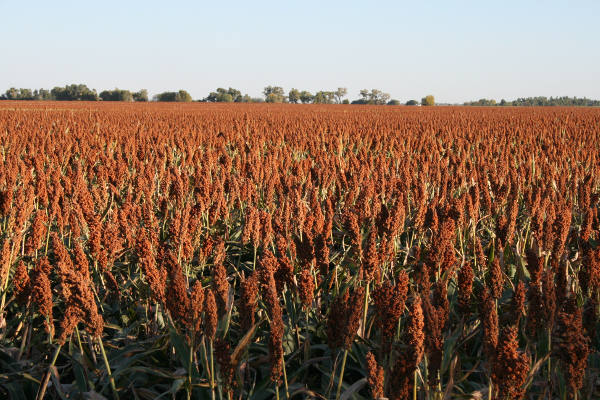February 2, 2012

With the La Nina weather pattern expected to continue, the South Plains of Texas once again seems susceptible to drought. Given the natural drought tolerance associated with sorghum and demand opportunities from Mexico, regions like the Rio Grande Valley and the Texas Coastal Bend are well positioned to increase sorghum acres.
Purchasing more than 78 million bushels of grain sorghum annually, Mexico is one of the most important markets for U.S. sorghum.
"Mexico is the predominant price driver for U.S. sorghum,” says Kevin Roepke, manager of International Operations for the U.S. Grains Council. “In any given year, Mexico alone accounts for roughly 25 percent to 30 percent of U.S. sorghum exports."
While the drought has affected numerous sorghum growing regions, particularly Texas, there is a potential silver lining for the 2012 sorghum crop. John Miller with Southwest Ag Consulting believes the strong demand for U.S. sorghum in Mexico will return as new crop supplies become available.
"The demand for sorghum by Mexico should increase given that the U.S. market is coming off a severe drought in 2011, even despite some recent rains that could boost production,” Miller said. “The drought, coupled with the U.S. running low on sorghum, helped to create high basis levels for corn. Therefore, the Mexican sorghum market should be primed for taking new sorghum supplies."
This return to the U.S. market has begun anywhere from late July to late October, after Mexico end-users utilize grain grown in their own country. In addition, Mexican users appreciate that U.S. sorghum is harvested at a moisture and quality level well-suited to their needs.
In January, the U.S. Department of Agriculture reported sorghum exports were down with sluggish export sales. However, Roepke said demand for grain sorghum continues to be and will always remain strong. That is particularly true in Mexico where the crop is considered by many Mexican livestock producers as the optimal grain for feeding livestock.
“Many people don’t realize it, but after China, Mexico is projected to be the largest growth market for U.S. grains during the next 20 years,” Roepke said.
Freight advantages
Population increases and a surge in income have led to a demand for a higher grade of protein, he said. Given the natural freight advantages in the Sorghum Belt, especially in Texas, U.S. sorghum is well positioned to supply Mexico with grain.
Nick Pinkston and his family farm grain sorghum, cotton and corn in Sinton, Texas. In a normal year, Pinkston would already have a portion of his new crop contracted. However, the 2012 crop is anything but normal.
"The majority of my grain sorghum crop is sold at the Port of Corpus Christi or to merchants in the Rio Grande Valley," Pinkston said. While he is not excited about the long-range weather forecast, which calls for a dryer than normal weather pattern into summer, he is energized by reports of strong opportunities to sell his grain sorghum in Mexico.
Miller says the dry conditions prevalent along most of the Texas coastal region should keep new-crop basis levels stronger relative to the past few years. In fact, basis levels should remain strong unless suddenly significant amounts of rain fall across Texas. This is despite better growing conditions in Northern Mexico since overall North American supplies are still tight by historical standards.
Miller said since the U.S. is Mexico’s closest exporter of sorghum, Texas will again be an important source of feed grain. One of the best ways for Texas to be an important player in Mexico is to have a crop.
“Once cross-border merchandisers see supplies developing in the field in the U.S., competition will start to develop and basis levels should firm quickly after harvest,” he said.
With at least modest amounts of moisture before planting, farmers will start thinking about the water demands of an entire season, Miller said. This can often lead to choosing more sorghum relative to cotton or corn across the South Plains on non-irrigated acres.
“On these same acres with no new rainfall,” Miller said, “farmers along the middle and lower coastal areas of Texas are weighing crop insurance programs for sorghum relative to cotton. With the crop insurance price election for cotton at 91 cents per pound and sorghum at $5.82 per bushel, farmers are looking at possible payout outcomes at their respective yields.”
For more information on the United Sorghum Checkoff Program call (806-687-8727).
You May Also Like




